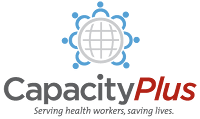Natural Disaster Affected Regions
Preparing Routine Health Information Systems for Immediate Health Responses to Disasters
The article focuses on health staff and managers, who develop and maintain routine health information systems, and highlights specific information needs, analysis, access and dissemination required to enable local and national emergency and public health teams to mount an adequate response to disasters. [from author]
- 663 reads
Experiences of Australian Humanitarian Workers: A Report on Preparations, Field Work and Returning Home
This study is based on findings of an investigation of the experiences of Australian disaster workers from a range of health-related fields who provided humanitarian relief in disasters, complex emergencies, conflict and post-conflict situations internationally. [from abstract]
- 710 reads
Cyclone Nargis 2008: Human Resourcing Insights from within the Myanmar Red Cross
This case study demonstrates that the success or failure of humanitarian operations in a large-scale public health emergency is significantly dependent on the quality of in-country health staff, prior training, timely deployment, availability of a standby-workforce, and the organisation’s surge capacity. [from abstract]
- 708 reads
Stories and Strategies - Public Health Emergencies: Lessons Learned from Pilot Phase of the Sexual and Reproductive Health Program in Crisis and Post-Crisis Settings in the Asia Pacific Region
The following paper is a synthesis of the findings of researchers on training transfer and efficacy of the Sexual and Reproductive Health Program in Crisis and Post-Crisis Settings in the Asia Pacific Region, which was designed to address sexual and reproductive health in all phases of the disaster cycle, with a particular focus on preparedness and coordinated response and the importance of human resources for an effective response. [adapted from abstract]
- 769 reads
Healthcare in Danger
In this issue of the Red Cross Red Crescent Magazine, contributors outline the global challenges of delivering health care during conflict or other situations of violence and health care after natural disasters. [from publisher]
- 1421 reads
Public Health Emergencies: Some Issues and Approaches
This presentation discusses the impact of public health emergencies on the health workforce and planning needs for addressing it.
- 1144 reads
Improving Effective Surgical Delivery in Humanitarian Disasters: Lessons from Haiti
This article highlights some challenges from the recent experience with surgical team after the Haiti earthquake and proposes some ways forward to support an effective surgical humanitarian response to future major disasters. [adapted from author]
- 1367 reads
Is Haiti's Health System Any Better? A Report Calling for a More Coordinated, Collaborative Approach to Disaster Response
All disasters are a health issue with national health workers at the heart of every response. This research into the role of national and international health workers after the 2010 earthquake in Haitie signals a need to rethink how the humanitarian community works with national health system and stresses how a strong health system offers vital protection from disaster-related risks.
- 7028 reads
Expanding the Impact: Using Volunteer Healthcare Providers to Expand the Global Health Workforce
This report will address the need to expand the global healthcare workforce and international emergency medical response mechanisms. It will also analyze the current mechanisms and channels that mobilize and coordinate healthcare volunteers in response to international disasters. The report will provide several collaborative pathways through which non-governmental organizations can coordinate their international emergency response efforts with volunteer teams of healthcare providers. [from introduction]
- 4442 reads
Need for Continual Education about Disaster Medicine for Health Professionals in China: a Pilot Study
Disaster medicine training is not included in medical education curriculum in China, even though the country has suffered various disasters annually. This article intended to assess the need for continual education regarding disaster management for health professionals in China.
- 22041 reads
Analysis of the Opinions and Experiences of Australians Involved in Health Aspects of Disaster Response Overseas to Enhance Effectiveness of Humanitarian Assistance
This report is based on findings of a study that analysed the opinions and experiences of Australians who provided humanitarian relief following disasters, in complex emergencies and wars. The issue of human resources within the humanitarian sector is now unquestionably on the agenda, and the identification of important gaps in knowledge within this field is the central thrust for the study which investigated Australian disaster workers from a broad range of health-related fields. [adapted from author]
- 15761 reads
Human Resources in Humanitarian Health Working Group Report
Task shifting is one avenue for delivering needed health care in resource poor settings, and on-the-ground reports indicate that task shifting may be applicable in humanitarian responses to natural disasters and conflicts. This report evaluates the potential strengths and weaknesses of task shifting in humanitarian relief efforts, and proposes a range of strategies to constructively integrate task shifting into humanitarian response. [adapted from abstract]
- 18554 reads
Health and Fragile States
With some of the worst health indicators and the least adequate health services in the world, providing health services and rebuilding health systems in fragile states is a complex undertaking. This health and fragile states dossier highlights the challenges and approaches to delivering health services in fragile states. [from publisher]
- 12992 reads
Using Non-State Providers to Meet Public Health Goals in Fragile States: Can They Fill the Gap?
This presentation was from the “Health Service Delivery in Fragile States for US$ 5 perperson per year: Myth or Reality?” conference. It discusses the limited public sector capacity to deliver priority services in fragile states and the opportunities and challenges of using non-state providers to increase coverage. [adapted from author]
- 7524 reads
Emergency Medical Services
This resource is a chapter from Disease Control Priorities in Developing Countries. Despite the best efforts of primary care providers and public health planners, not every emergency is preventable. Actual provision of emergency care may range from delivery using trained emergency professionals to delivery by laypeople and taxi drivers. Developing strategies to meet the range of needs posed by such diverse circumstances will require innovation and a reorientation of public health planning. [from introduction]
- 7350 reads
Central America Field Epidemiology Training Program (CA FETP): a Pathway to Sustainable Public Health Capacity Development
The Central America Field Epidemiology Training Program (CA FETP) is a public health capacity-building training programme aimed at developing high-caliber field epidemiologists at various levels of the public health system. The curriculum is competency-based, and is divided into a three-tiered training pyramid that corresponds to the needs at the local, district and central levels of the health system.[adapted from abstract]
- 5948 reads
Human Resources for Health in Fragile States
This article discusses the requirements for improving the experience of health care workers in fragile states. Efforts are needed to establish performance-management systems, to support promotion based on merit, and to provide wider opportunities for professional development. These efforts must be accompanied by measures to restructure the workforce (in some cases radically), thus matching staffing levels with agreed norms and to redress imbalances between rural and urban areas and between different levels within the system. [adapted from author]
- 8694 reads
Coping with Crisis: How to Meet Reproductive Health Needs in Crisis Situations
People caught in crisis situations have crucial reproductive health needs. The needs of pregnant women are most urgent. Complications of labor and delivery can be life-threatening when women lack adequate care. Risk for HIV/AIDS, other STIs, and unwanted pregnancy increases, particularly when disorder provides cover for rape and other sexual coercion. Health care providers understand people’s needs and have experience meeting them, but few have worked in humanitarian relief.
- 4909 reads
On Pandemics and the Duty to Care: Whose Duty? Who Cares?
An honest and critical examination of the role of Health Care Professionals (HCPs) during communicable disease outbreaks is needed in order to provide guidelines regarding professional rights and responsibilities, as well as ethical duties and obligations. With this paper, we hope to open the social dialogue and advance the public debate on this increasingly urgent issue. [summary]
- 6445 reads
Recruitment and Retention of a High-Quality Healthcare Workforce
Functioning health services are key to making the community of New Orleans livable again. Conversely, a livable community is key to attracting a stable healthcare workforce to New Orleans. Hurricane Katrina forced the entire healthcare workforce to evacuate the City of New Orleans and a large majority of these workers have since found jobs elsewhere, such as in neighboring parishes and Texas. This brief summarizes policy options to create and maintain a healthcare workforce, as well as options to bridge the transition from the current situation to the point at which the interventions will show an effect.
- 5571 reads




